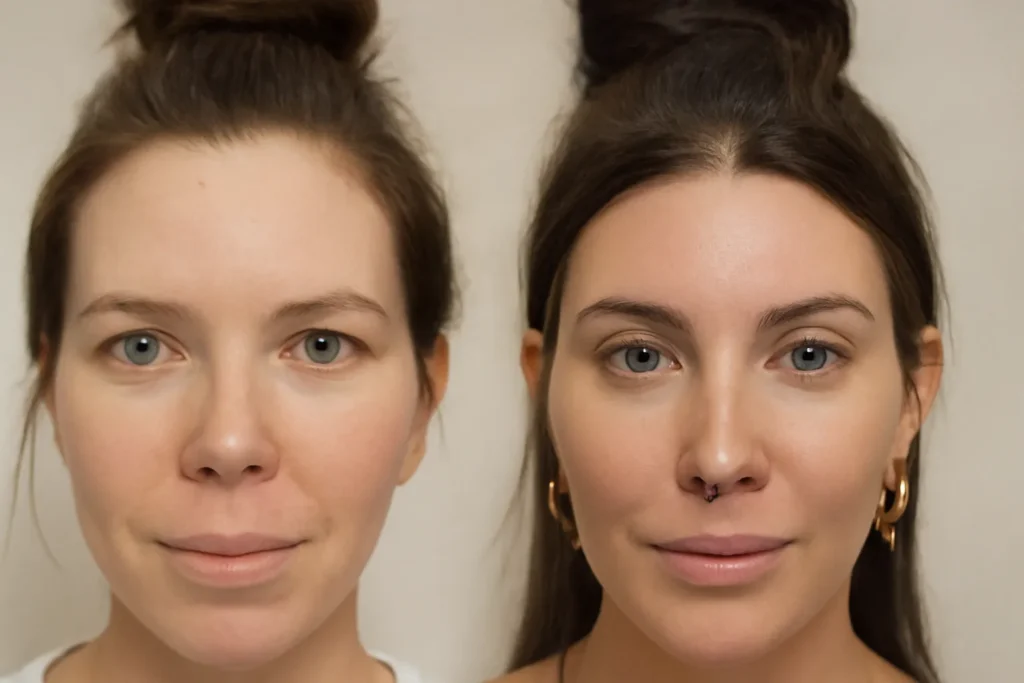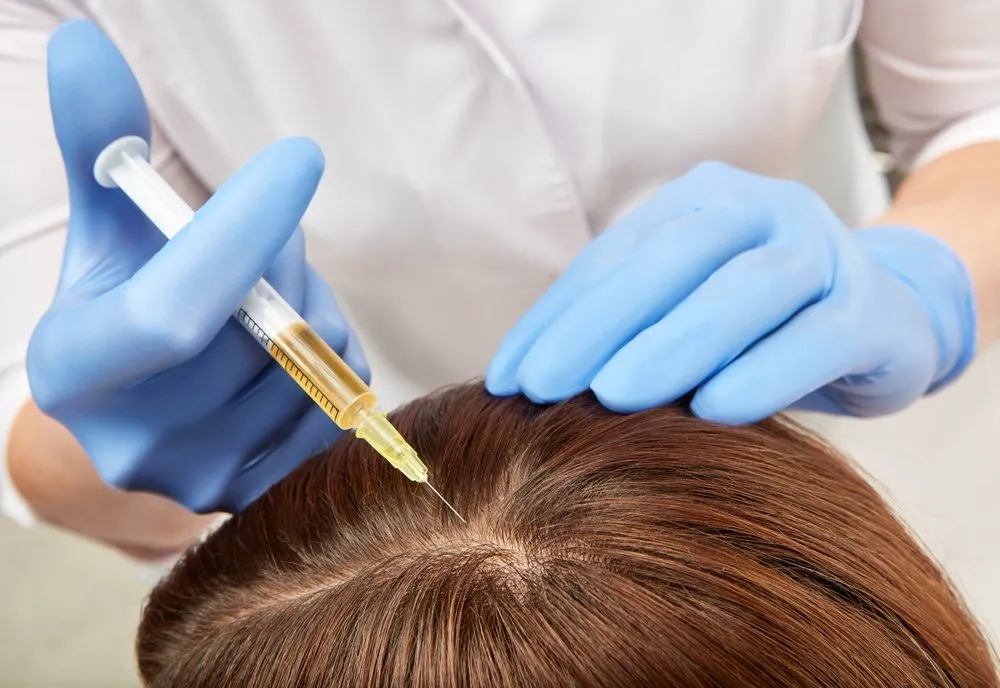Considering a lower hairline to balance your facial proportions? While hairline lowering surgery complications are rare, they can happen—and being informed is key. This article walks you through potential risks, recovery milestones, and expert-backed prevention tips.
You’ll learn how to spot red flags early, reduce risk, and make confident decisions about your cosmetic goals. Trust this medically grounded guide to help you approach the procedure safely and wisely.
What Is Hairline Lowering (Forehead Reduction)?

Hairline lowering surgery—also known as forehead reduction or scalp advancement—is a cosmetic procedure designed to shorten the forehead by bringing the hairline forward. It’s commonly requested by individuals with a high hairline due to genetics, hair loss, or prior procedures.
Unlike a hair transplant, this surgery involves a precise incision along the hairline, mobilizing the scalp, and advancing it forward. It’s ideal for people with good scalp laxity and no ongoing pattern baldness. Men and women alike opt for this surgery for aesthetic balance, gender affirmation, or facial feminization.
Common and Rare Complications
Understanding the potential side effects of this procedure helps manage expectations and allows you to take proactive measures during recovery.
Typical Minor Issues
- Swelling and bruising: Usually appears within the first 48 hours and resolves within a week.
- Headaches or discomfort: Mild pain is common and manageable with prescribed medication.
Infection & Bleeding Risks
- Post-op infections are rare when sterile techniques are followed. Still, proper wound care is essential.
- Minor bleeding or drainage may occur, but persistent bleeding requires medical attention.
Scarring Concerns
- A linear scar along the hairline is inevitable, though skilled surgeons hide it within the hairline.
- Hypertrophic scars or keloids may form, especially in individuals with a predisposition.
Hair Issues
- Shock loss around the incision site may cause temporary shedding.
- In rare cases, permanent hair loss can occur if hair follicles are damaged.
Numbness & Nerve Damage
- Temporary numbness at the front scalp area is expected and often resolves in weeks.
- Permanent sensory loss or nerve injury is rare but possible.
Skin Necrosis & Asymmetry
- If blood supply to the advanced skin is compromised, skin necrosis may occur—though rare, it’s serious.
- Uneven advancement may lead to aesthetic asymmetry requiring revision.
Unnatural Hairline or Aesthetic Issues
- A poorly designed hairline can appear too straight, low, or unnatural.
- These cases may need corrective surgery or hair transplantation for improvement.
Why These Complications Occur
Several factors influence the risk and severity of complications:
- Scalp laxity: If the scalp is too tight, it increases tension on the suture line and impedes healing.
- Hair density and pattern baldness: Thin hair or ongoing hair loss may unmask scars in the future.
- Surgeon experience: Board-certified plastic surgeons with specific experience in scalp procedures significantly reduce complication risks.
- Surgical technique: Proper vascular preservation, gentle tissue handling, and tension-free closure are key to minimizing side effects.
Timeline: Recovery & Monitoring
A structured recovery timeline helps set realistic expectations and allows for early detection of complications.
| Time Frame | What to Expect |
|---|---|
| Day 1–3 | Swelling, mild pain, bandages applied. |
| Day 4–7 | Suture visibility, bruising subsides, itching begins. |
| Week 2 | Sutures removed (if non-absorbable), scar care starts. |
| Week 3–4 | Numbness persists; hair shedding may begin. |
| Month 2–3 | Scar flattens; early results visible. |
| Month 6–12 | Final results: hair regrowth near incision improves camouflage. |
How to Prevent & Minimize Complications
Prevention begins before surgery and continues well into recovery.
Before Surgery
- Choose a board-certified plastic surgeon or hair restoration expert.
- Discontinue blood thinners or NSAIDs (as advised).
- Avoid smoking for at least 2 weeks prior.
During Surgery
- Surgeons may use tissue expansion to reduce tension.
- Advanced closure techniques (e.g., layered suturing) improve healing.
After Surgery
- Keep the incision site clean and dry.
- Sleep with your head elevated for a week.
- Avoid intense physical activity for 3–4 weeks.
- Use scar creams and follow sun protection protocols for 6+ months.
Pro Tip: Ask your surgeon if they offer PRP or exosome therapy to promote healing and reduce shock loss.

Comparison: Surgery vs. Alternative Methods
| Method | Pros | Cons |
|---|---|---|
| Hairline Lowering Surgery | Immediate result, one-time procedure | Risk of scar, higher cost |
| Hair Transplant | Less invasive, flexible design | Gradual results, may need multiple sessions |
| Brow Lift | Dual benefit (aesthetic + hairline) | Not ideal for large hairline shifts |
When to Consult a Surgeon
Seek professional help if you experience:
- Persistent bleeding beyond 24 hours
- Intense pain not managed by medication
- Uneven results or visible asymmetry
- Skin color changes or odor from the wound
Schedule a revision consultation if you’re unhappy with the aesthetic result after 6–12 months.
FAQs
What is the complication rate of hairline-lowering surgery?
Complications are rare, occurring in under 5% of patients when performed by qualified surgeons.
How long does numbness last?
Temporary numbness typically resolves within 3–6 months.
Is the scar always visible?
With good scalp density and closure technique, most scars fade and are easily hidden by hair.
When should I worry about necrosis or infection?
If the skin turns blackish, oozes pus, or causes fever, consult your surgeon immediately.
Can I get a hair transplant over the scar later?
Yes, hair grafts can camouflage scars if needed.
Will I lose more hair after the surgery?
Some shock loss may happen temporarily, especially if hair follicles near the incision are disrupted.
Take Your Next Step
Considering a hairline lowering procedure? Don’t leave your results to chance.
Book a consultation with an ABHRS-certified expert with years of experience in surgical hairline design and correction. Get personalized advice and minimize your risk of complications.
